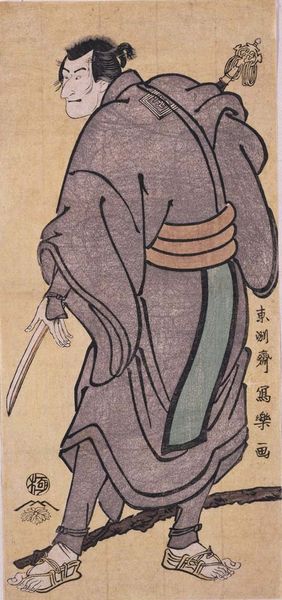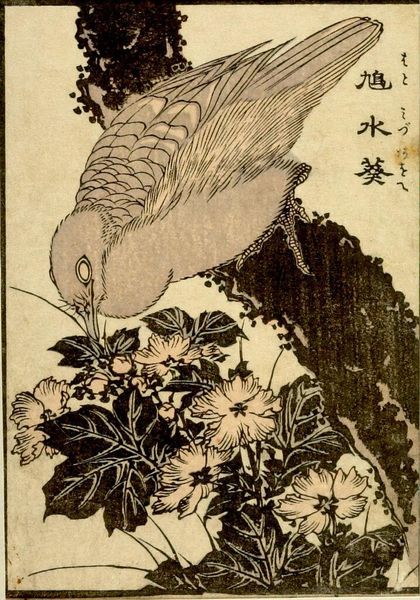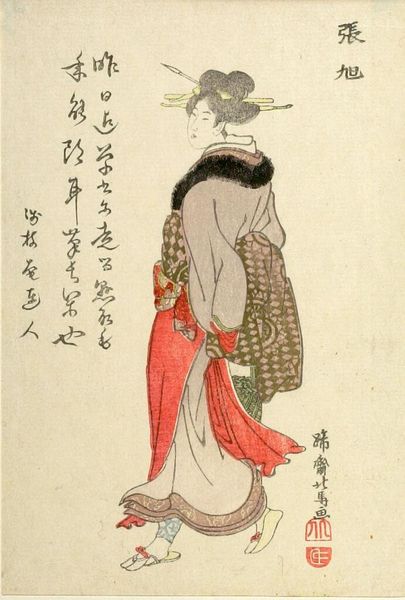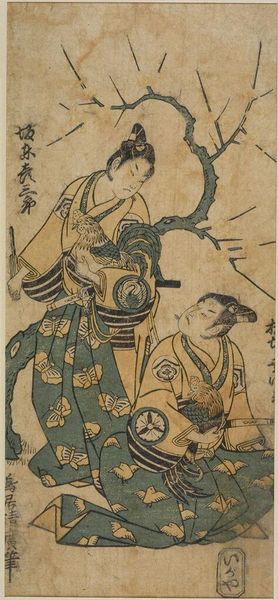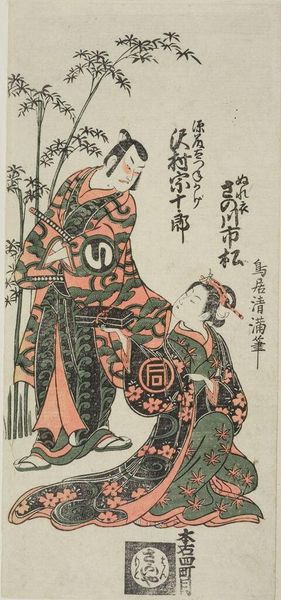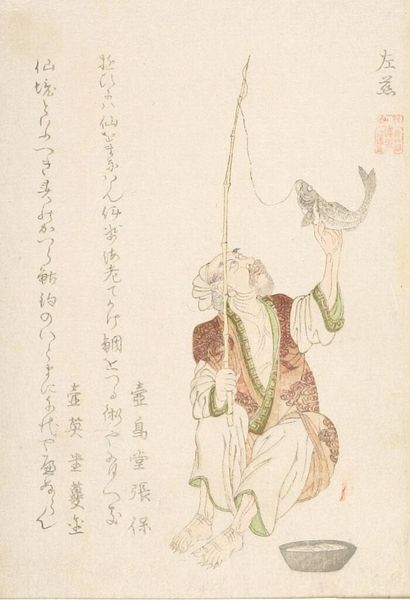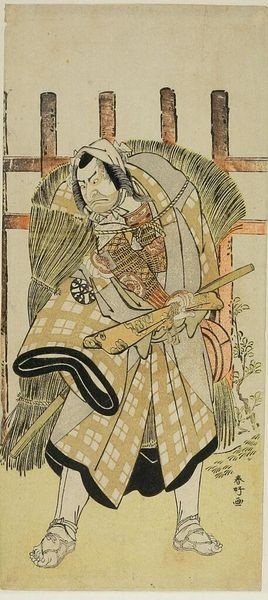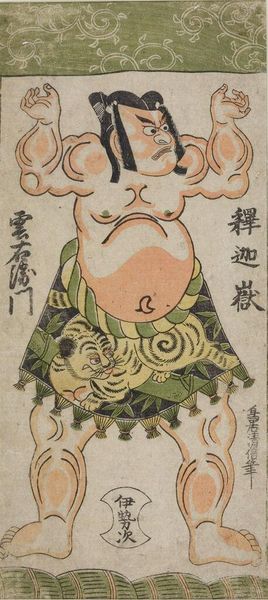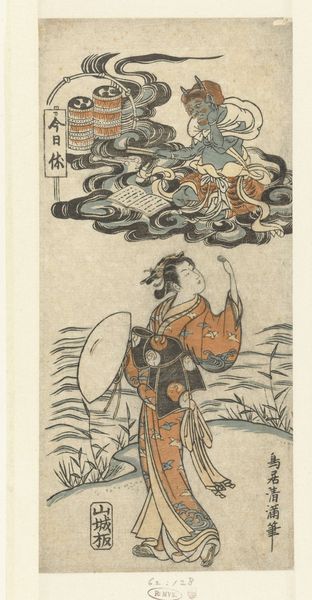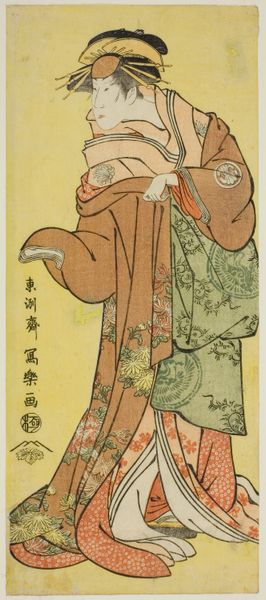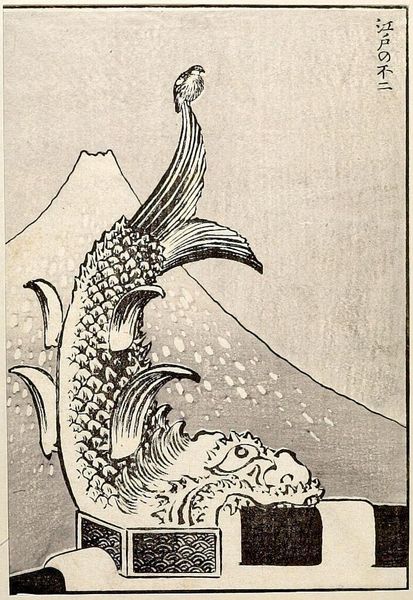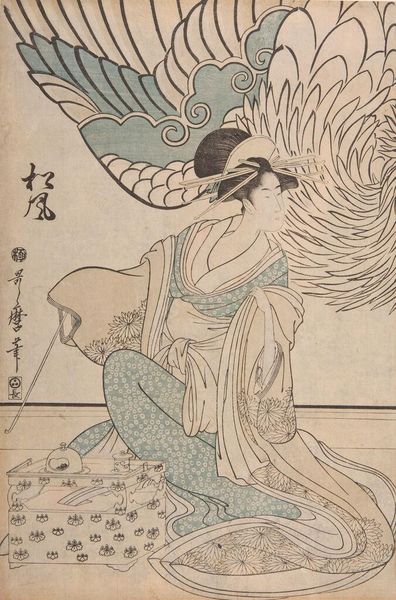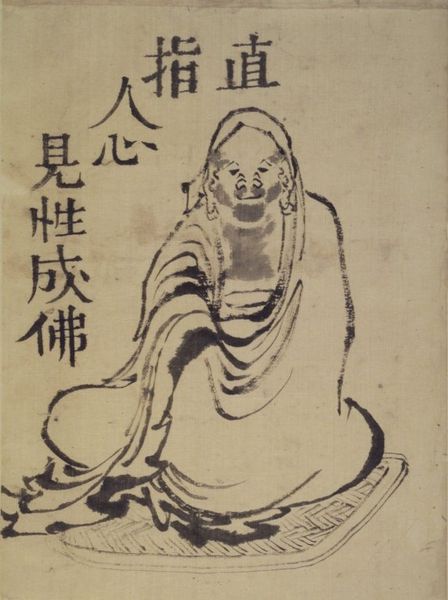
Female Elephant from Central India (Tenjiku kudari daijÅzÅ no zu), published by Otakuya Takichi Possibly 1861
0:00
0:00
Dimensions: Paper: H. 36.3 cm x W. 23.9 cm (14 5/16 x 9 7/16 in.)
Copyright: CC0 1.0
Curator: Here we have IkkÅsai Yoshimori's "Female Elephant from Central India," a woodblock print whose publisher was Otakuya Takichi. The print on paper is a striking piece from the Harvard Art Museums. Editor: It's immediately striking, the way the elephant is both monumental and constrained, with that rope around its leg. The muted palette adds to a sense of quiet power. Curator: Indeed. Consider the materiality of this ukiyo-e print – the specific inks and paper, the labor involved in carving the blocks, and the eventual mass production for consumption. It challenges Western notions of art as purely individual expression. Editor: And that rope speaks volumes about power dynamics, doesn't it? It's a stark visual metaphor for domination and control, reflecting colonialist attitudes of the time. The elephant, majestic yet subdued, becomes a symbol of subjugated populations and resources. Curator: A potent reminder that even art seemingly removed from politics can carry heavy socio-political weight. Editor: Exactly, making us question our own role in perpetuating or challenging these narratives. Curator: It's fascinating how a print, through its materials and context, can open up such broad conversations. Editor: Yes, offering insights into both the past and our present.
Comments
No comments
Be the first to comment and join the conversation on the ultimate creative platform.
